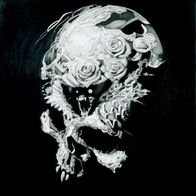Elevator to the Gallows
dal 18/3/2009 al 2/5/2009
Segnalato da
18/3/2009
Elevator to the Gallows
Kunsthalle Wien, Wien
The project is situated in the existential "twilight zone" where lie and truth, crime and justice, sexual excess and bourgeois morals fray and reorganize to form new social parallel universes. The exhibition is aimed at measuring the noir complex in its contradictions and in its fatal seductive charm across the genres of art (Banks Violette, Weegee), literature (Dashiell Hammett), film (John Huston), and music (Miles Davis). In his sculptural works and installations, the young New York artist and curator of the exhibition Banks Violette takes up several aspects of this noir tradition.

Curators: Banks Violette, Gerald Matt
In novels and films categorized as belonging to the noir genre, the action – as cultural theorist Frederic Jameson has
pointed out – often shifts to locations beyond specific boundaries of the symbolic order. Jameson speaks of places
not included in the urban system of signs, places of a counterworld, as it were, a realm beyond time and space,
another dimension. The exhibition Elevator to the Gallows is situated in this existential “twilight zone,” where lie and
truth, crime and justice, sexual excess and bourgeois morals fray and reorganize to form new social parallel
universes. Curated by Banks Violette and Gerald Matt, the show presents the artists Banks Violette, Miles Davis,
John Huston, and Weegee. It is aimed at measuring the noir complex in its ambivalences, contradictions, and moral
ambiguities, but also in its fatal seductive charm across the genres of art, literature, film, and music and at fathoming
it in its existential abysmal aspects between nightmare and loss of the world.
The adaption of Dashiell Hammett’s 1930 novel The Maltese Falcon for the screen established the American noir
series, which outlined the picture of a society in which disillusioned anti-heroes know no good and have lost their
belief in happiness. As hard-boiled private eyes, they turn into players of the illegal milieu, and though camera and
lighting provide clearly defined black-and-white scenarios on an aesthetic level, the definitions of good and bad, guilt
and innocence blur and the roles of victim, perpetrator, and witness change. Making Humphrey Bogart a star, John
Hustons’s movie from 1941 is one of the outstanding detective films of Hollywood’s classical noir era and had a
significant impact on the entire genre.
Miles Davis’ music for the neo-noir classic Elevator to the Gallows (1958) by Louis Malle combines the rough
syncopation of the hard-boiled American private eye movies of the 1930s with a fundamentally European cool
fuelled by existentialism and a feeling of thrownness. The trumpet epigrammatically commenting Jeanne Moreau’s
desperate nocturnal search for her disappeared lover produces a frictional heat between image and sound which –
far beyond the story of the film itself – describes the frame of mind characteristic of the disoriented postwar
generation between the Indochina and the Algerian Wars.
Weegee explored the New York twilight zones of conventional morality with his camera. As a paparazzo and police
photographer, who dubbed himself “the Famous,” Weegee, chasing after the most sensational shot, was usually the
first on the scene when somebody had been murdered in Manhattan. He left thousands of photographs of
murderers and their victims, of gangsters, and gawkers, which he had made between the early 1930s and 1950s.
“Naked City” was how he called his forays’ turf which seemed to reveal a typology of evil, an iconography of crime.
Weegee was not only an excellent documentarist of his time and its society, but also a creative producer of his own
settings. He manipulated his motifs and pictures, arranged corpses, and retouched photographs.
In his sculptural works and installations, the young New York artist Banks Violette takes up several aspects of this
noir tradition: the nameless horror, the amoralism, the tendency to violence as an antithesis to bourgeois poise – but he transfers these into the milieu of the last two decades’ black romantic youth cultures like Black Metal or Neo
Goth. The artist’s interest focuses on the aestheticization of” the evil” as a thoroughly American phenomenon that
still exerts its influence. Due to their shining materials Banks Violette’s works resemble luxurious objects of
seduction. “It’s a devils advocate position…look if you’re finding arson beautiful, if you’re finding death beautiful,
then there is some trigger in there,” says the artist. He characterizes the controversial character of his contemporary
artistic monuments by asking, “How do you make a crime beautiful?“ – thus almost paraphrasing Weegee’s
demonstration “How to photograph a corpse” at the Institute of Design in Chicago in 1948. Banks Violette
collaborates with Metal Bands like Darkthrone or Celtic Frost. The Band Sunn O))), whose leader Stephen O’Malley
has composed soundtracks for some of Violette’s works, performs at the openings of his shows. Fire, metal,
mirrors, lacquer, and synthetic materials become aesthetically productive, reversing conventional categories of
beauty and morality.
Film program: A program with film noir classics organized in cooperation with the Vienna Topkino will accompany
the exhibition. The following films will be shown: Elevator to the Gallows by Louis Malle (1958), The Naked City by
Jules Dassin (1948) and The Maltese Falcon by John Huston (1941).
Catalogue: An exhibition catalogue with texts by Harold Schechter, Gaby Hartel, Norbert Schmitz, Luc Sante, and
Thomas Mießgang, as well as an interview with Banks Violette by Gerald Matt, will be published by Verlag für
moderne Kunst Nürnberg. Ed.: Gerald Matt, Kunsthalle wien, c. 140 pages, c. 100 b/w and color illustrations.
Press contacts
Claudia Bauer (Head) Telefon: +43-1-521 89-1222
Katharina Murschetz (Assistent) Telefon: +43-1-521 89-1221 Fax: +43-1-521 89-1217 presse@kunsthallewien.at
Press preview: Thursday, 19 March 2009, 10 a.m.
Opening: Thursday, 19 March 2009, 7 p.m.
Kunsthalle Wien
Museumsplatz 1 - Wien
Daily 10 a.m. – 7 p.m., Thur 10 a.m. – 10 p.m.



